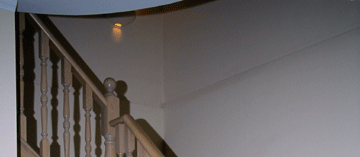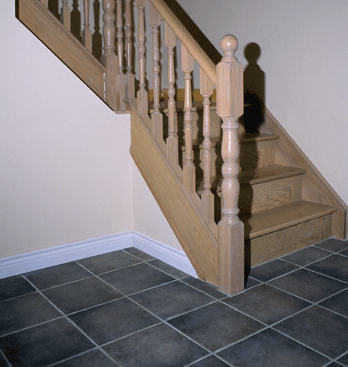| This image shows 2 sets of stairs. The stair leading from
the top left of the image is partly between two walls at the top. The
upper set of stairs terminates at a landing, the landing turns you 90
degrees with the lower set of stairs ending on the basement floor. This is
a classic example of how the railing system works on top of an
exposed housed stinger. Notice the shoe mould on top and how the turning
detail in the middle of the balusters form a uniform angle as they cascade
down the length of the stair. Note the profile of each tread and riser is
not visible from the open side, rather one sees a 2 x 12 solid wood face
and the railing system positioned a top it.
1. points to the interior view of a housed stringer where one can
see wood above the line of the tread
2. points to the end of the stairs which is usually about 3" from
the last riser. This is important because if space is tight, you need to
leave room for this. If this were a cut stringer then it would have
ended behind the last riser.
-
if your browser supports the feature run your mouse around the image and
important details will become visible about the item
|

